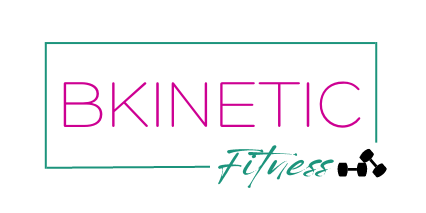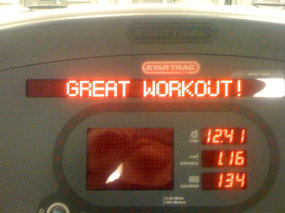Cardio is typically lauded as the best way to lose weight. Need to lose body fat? Run. Hit a plateau? Run more. Still not seeing results fast enough? Run even more.
It’s easy to think that more exercise equals more results.
This isn’t always the case. After a certain point, there’s diminishing returns on your efforts. You put forth more effort for fewer results. And then there’s a point when it actually works against you (hello, starvation mode and overtraining!).
And if we exercise too much (especially cardio), our hunger and cravings will skyrocket and all but ensure we’ll eat more than we need. Which will cause us to think we need to exercise more to counteract the overeating. It’s a vicious cycle.

So there must be a careful balance in order to not only lose weight, but to keep it off in a sustainable manner. And short yet effective workouts can help you stay consistent even when your schedule gets packed.
Enter high intensity interval training, or HIIT for short. Intervals, if you’re not familiar with them, are workouts that have alternating periods of intense effort and easy recovery effort or complete rest. They are efficient and effective for both fat loss and cardiovascular fitness. They can be beneficial even if you’re a long distance runner or triathlete.
Intensity is the driver of results with shorter workouts. And combining weightlifting and cardio together can be a potent fat-burner that spurs fat oxidation 24/7, not just during the workout itself.
This occurs through the “afterburn effect,” also known as EPOC (excess post-exercise oxygen consumption). The body increases oxygen use after exercise to bring various processes back to baseline. This takes energy (calories).
A Primer on HIIT Cardio
Options:
You may think that you need a gym membership or a piece of cardio equipment like a treadmill to do intervals, but nope. You can use your body weight or walk/run outside. Here are some other ideas:
* bike (inside or outside)
* jump rope
* elliptical
* stairmaster
* swim
* battle ropes
* sled pulls/prowler push
* kettlebell swings or snatches
* bodyweight: jumping jacks, mt. climbers, step-ups, lateral shuffle, dynamic squats, skaters(Note: I don’t recommend burpees or squat thrusts for this, as form tends to break down pretty quickly, making your risk of injury higher)
Create your own interval workouts:
First, figure out the ratio you want to use. The more rest you give yourself, the easier it can be (more time to recover — important for beginners and those who haven’t been including intervals in their training already), or conversely, harder and more anaerobic (maximum effort 10 out of 10, can’t go any longer).
The ratio you choose will dictate both the intensity of your workout and the type of workout (ie aerobic or anaerobic). The smaller the ratio, the more aerobic it is, as you’re not giving yourself enough time to recover enough to go at your max effort during the next work period. This also means that your speed/intensity will drop incrementally, lowering the overall potency of the workout itself. A larger ratio allows you to recover to the point that you can go just as hard the next go-round.
Experiment with these ratios and times and see what works best for you.
1:5 (such as 10 seconds work, 50 seconds recovery)
1:4 (20 sec work, 80 sec/1 min 20 sec recovery)
1:3 (15 sec work, 45 sec recovery)
1:2 (15 sec work, 30 sec recovery)
1:1 (30 sec work, 30 sec recovery)
Second, figure out how many intervals or how long you want the workout to be. I suggest that beginners and those who haven’t done intervals in a while stay on the lower side, anywhere from 2-6 to start, adding 1 or 2 more each week if desired. More advanced and fit individuals can start with a higher number of intervals, like 4-10.
Third, decide the duration of your workout. Again, beginners want to start with a shorter duration of 5-10 minutes, and more fit people can go shorter or longer, depending on the number of intervals and the total time of each interval (eg 20 sec work:40 sec rest = 60 sec x 5 = 5 minutes (not including warm-up and cool down)), as well as the overall intensity. And yes, done right, a 5-minute interval workout can be a challenge and improve your fitness and boost fat loss.
I recommend keeping your interval workouts to 20 minutes max, not including warm-up and cool down. If you can easily go longer, you’re probably not working hard enough during the work portion for it to truly be a high intensity interval training (HIIT) session. This is getting into the moderate intensity level, which is fine if it fits your goals. But more is not necessarily better, especially when it comes to fat loss!
Advanced — 1-3 times per week on a day other than leg day
Again, more is not better. High intensity workouts take a lot out of you, and I’m not just talking about fatigue or muscle soreness. They stress our CNS (central nervous system) to a degree that requires more recovery time. Just as being highly stressed at work quickly wears you down, these kind of workouts do the same. It’s a good stress, sure, but it is treated by the body just the same with spikes in cortisol and other stress hormones, which can ultimately affect your ability to burn fat and build muscle. Not to mention affect your performance in subsequent workouts.

